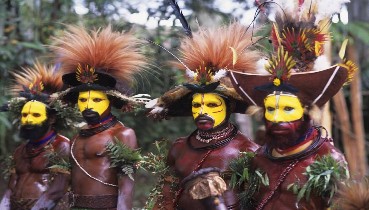
The Strange Burial Customs of Trunyan Village
On the eastern shore of Lake Batur, on the island of Bali, Indonesia, lies the village of Trunyan—home to the culturally isolated Bali Aga people. Living in relative seclusion amidst the mountains, the Bali Aga people have managed to preserve several elements of their Austronesian heritage, which is evident in their architectural style and cultural practices. Among these, their funeral rituals stand out as particularly noteworthy.
In Trunyan, dead bodies are not buried nor cremated. Instead, they are left out in the woods to decay. Unlike the Zoroastrians, who also expose their dead to the elements to be consumed by scavenger birds such as vultures, kites and crows, the Bali Aga people take care to protect their dead from such desecration by covering them with cages made of bamboo. Once the flesh had decomposed, the skull and other bones are retrieved and placed on a rock platform nearby to make room for new bodies.
Photo credit: Yusuf IJsseldijk/Wikimedia CommonsIntrepid travelers who have visited the cemeteries of this remote community have frequently expressed astonishment at the surprising lack of putrid smell that typically accompanies decaying corpses. The lack of smell is attributed to the presence of an old banyan tree that is referred to as Menyan Taru, or “fragrant tree”, that is said to mask the decaying smell by its sweet fragrance. However, visitors to Trunyan cemetery often claim that no such fragrance emanates from the tree. The absence of smell from the rotting corpses is somewhat a mystery.



